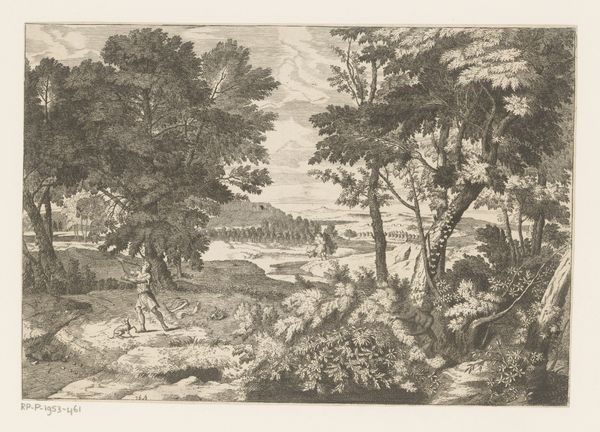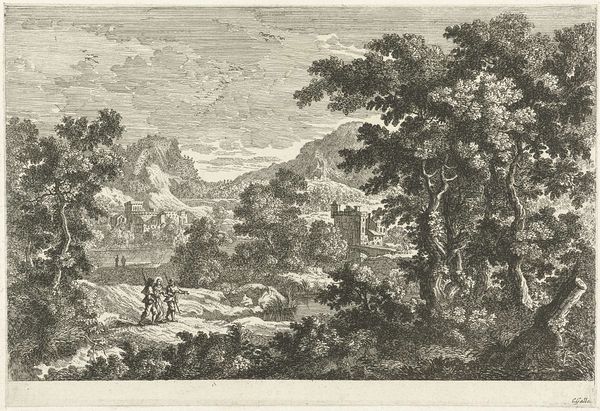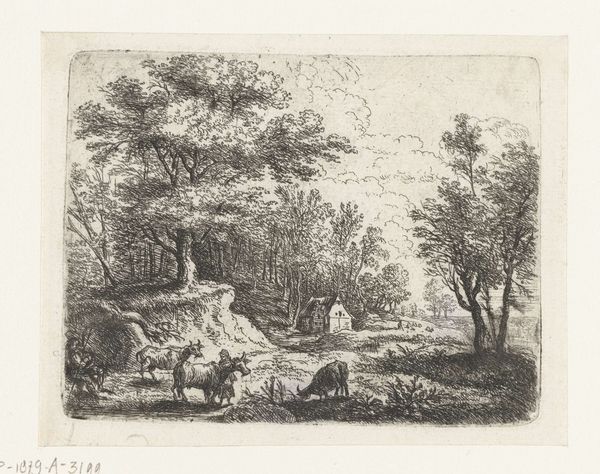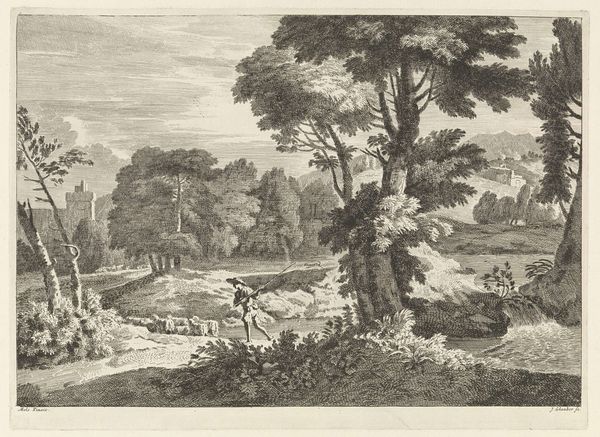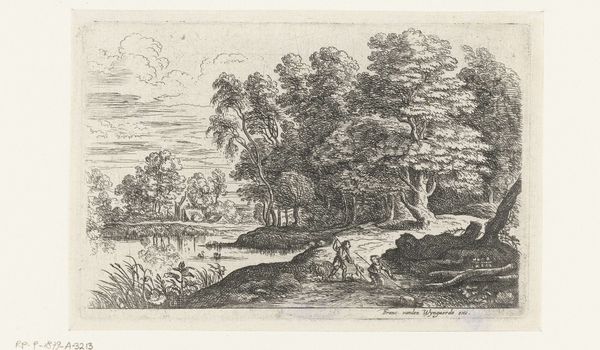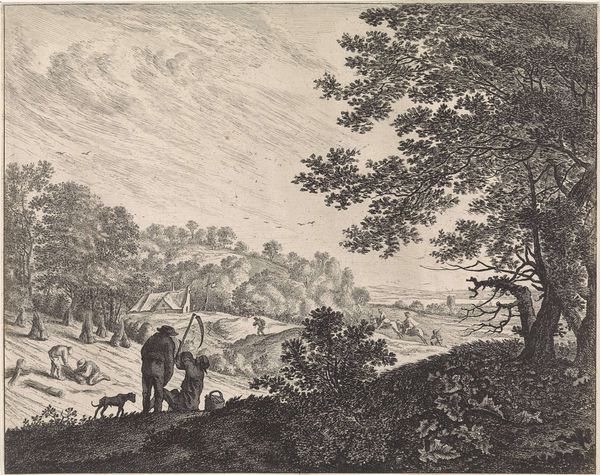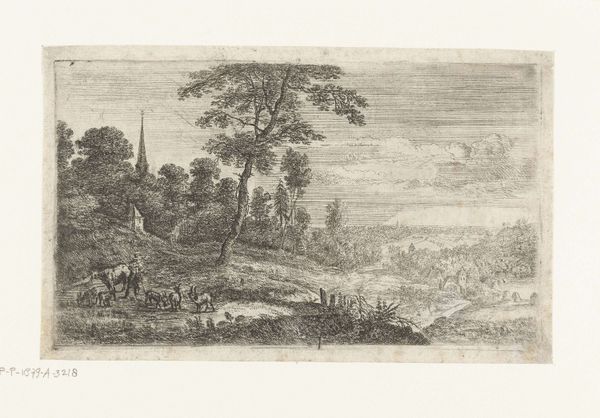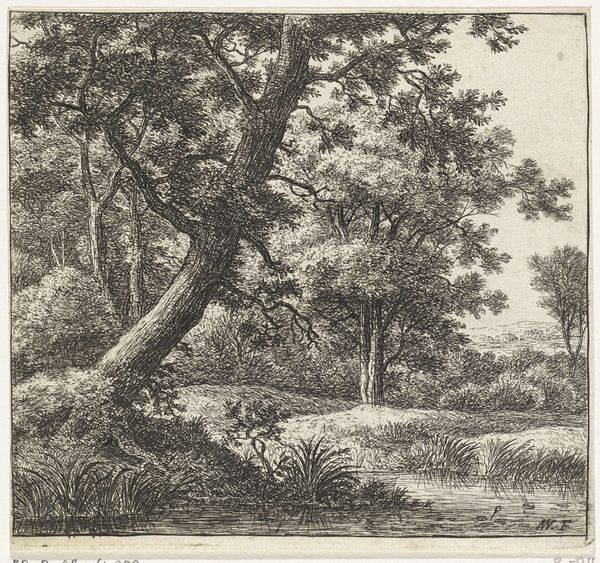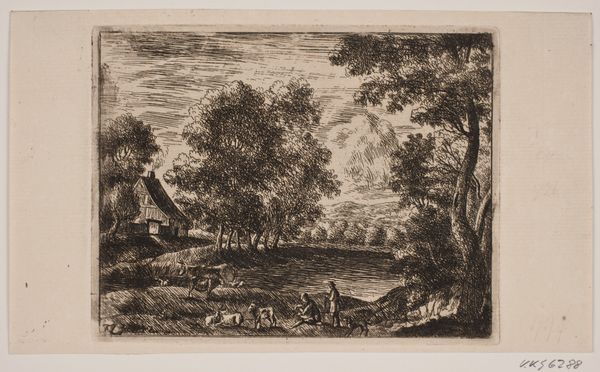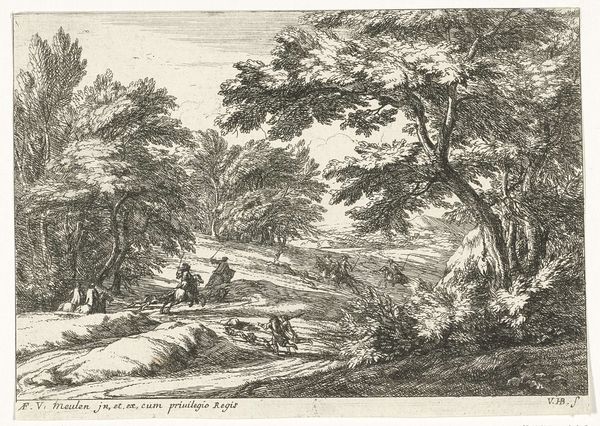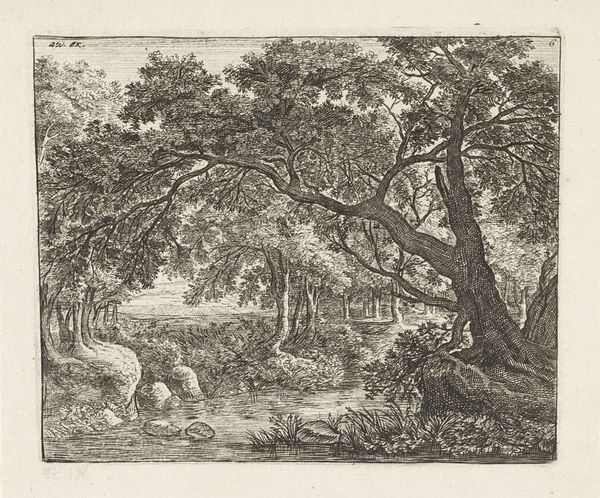
Dimensions: height 88 mm, width 123 mm
Copyright: Rijks Museum: Open Domain
Curator: The first thing I notice is this delicate rendering, achieved through engraving on a plate. Editor: It feels so peaceful, almost idyllic. There's a comforting simplicity in the arrangement. Curator: Indeed. This is Pierre Joseph Jacques Tiberghien's "Landschap met bomen op de voorgrond" which roughly translates to "Landscape with Trees in the Foreground" from 1786. It’s a fine example of the Romantic movement’s fascination with nature. Editor: What role did imagery like this play in its period? Was this idealized or part of some other discussion in France at the time? Curator: That’s a critical question! Consider that engravings like this served both aesthetic and, crucially, documentary purposes before photography. Landscapes, especially idealized ones, reinforced cultural ideals and notions of national identity in Revolutionary France, but at the same time, one can notice through the very line-based quality of the etching a turn away from traditional classical artistic values towards a less hierarchical engagement. Editor: So, almost a deliberate democratization of imagery? Curator: Precisely. The figure leading the herd feels integral but not dominant, equally part of a greater narrative with the water, landscape, and looming sky in the back of the scene, all under the same etched sky. It creates a more inclusive, less hierarchical image of humanity. Editor: It does evoke a sense of place and daily life of that time. Curator: The composition really invites the viewer into the scene, almost to participate in the daily rituals. The artist invites us in as witnesses, almost to a pastoral existence. Editor: Well, for me, reflecting on Tiberghien's world building, this work reminds me of how landscape itself has become so charged with political meaning now. The ability to see places as intrinsically linked to political discourses can be powerful. Curator: For me, this work also reveals how long-standing symbols of stability have remained so crucial to conceptions of European identities, as the imagery shows, a dialogue as pertinent today as in Tiberghien's time.
Comments
No comments
Be the first to comment and join the conversation on the ultimate creative platform.


